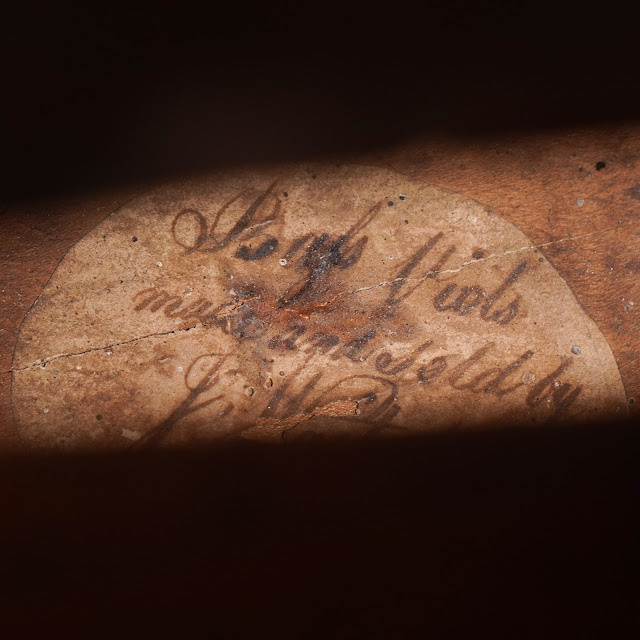1832 J. Wait Bass Viol ("Church Bass" or "Yankee Bass")
While this looks like a cello, it's actually what's usually called a "church bass" or "Yankee bass" in New England. Makers called them bass viols but that name is something usually used to describe a gut-fretted, cello-sized instrument from a little earlier-on. These New England "bass viols" were used for underpinning choirs and were tuned in all sorts of ways but they were usually lower-pitched than a cello.
We have strung this one up with a mix of antique and used gut strings and tuned it ADGC low to high like a modern "tenor bass" in 4ths. This is an ideal range for this instrument as it allows it to work like a traditional bass in playing-style but the pitch is suited to the body which is slightly longer and somewhat deeper than a cello but not really even getting into 1/4-size bass territory. It also has a "short neck" with "fret 7" at the neck joint, so leaning into its use as a bass seemed the right approach.
This folksy old beast was an enormous project. It arrived with its back completely off, small pieces missing, edges without any ability to fit together due to differing rates of expansion and contraction, lots of cracks, a broken neck that was repaired poorly several times, a loose fingerboard, warped and useless bridge, blocking on the inside that was not durable enough for use and/or repaired in questionable ways... everything that could be bad was bad.
Andy spent a huge amount of blood, sweat, and tears putting this back together. The biggest hurdle was just getting the back on. When these were made, the top and back had channels cut in them to fit the ribs (sides) into, rather than kerfing or lining to help make a larger channel to glue the top/back on flat like on a modern instrument. Because of expansion/contraction, that channel was completely useless and so it had to be filled and then Andy fit kerfing to the back and shims to the sides to give it enough surface area and matched surfaces to glue-up.
It also had a problem with the neckblock and endblock as both were way too weak for their functions. As I recall, we added some material to them (this part was over a year ago) and then we fit a 1/2" dowel that runs on the inside about an inch above the back which is anchored to and connects both blocks and gives the whole instrument a lot more rigidity that it was missing.
Andy then got the neck joint trauma dealt with (it has a variety of old bolts embedded that we re-used but improved upon), reglued and then planed the fingerboard, tirelessly refit missing pieces to the top and back edges and then blended them in with the old bits, cut a nice new bridge, added new tailgut, and set it all up. It has a myriad of old crack repairs on the inside with dozens and dozens of cleats throughout.
Suffice to say, it was quite the challenge, but in the end it's wonderful that it's functional, sturdy, and ready to serve. These instruments are extremely rare to find in working shape these days.

































Comments
These early instruments were used only in New England churches to keep the chorus in tune when singing prior to the Civil War.
This instrument was owned by Alvin H. Baker (1810-1861) who was a vocal and music teacher from Enosburgh, Vermont. Here is a link to photographs of it: https://www.facebook.com/photo/?fbid=10161613530078517&set=pcb.9406171896094047